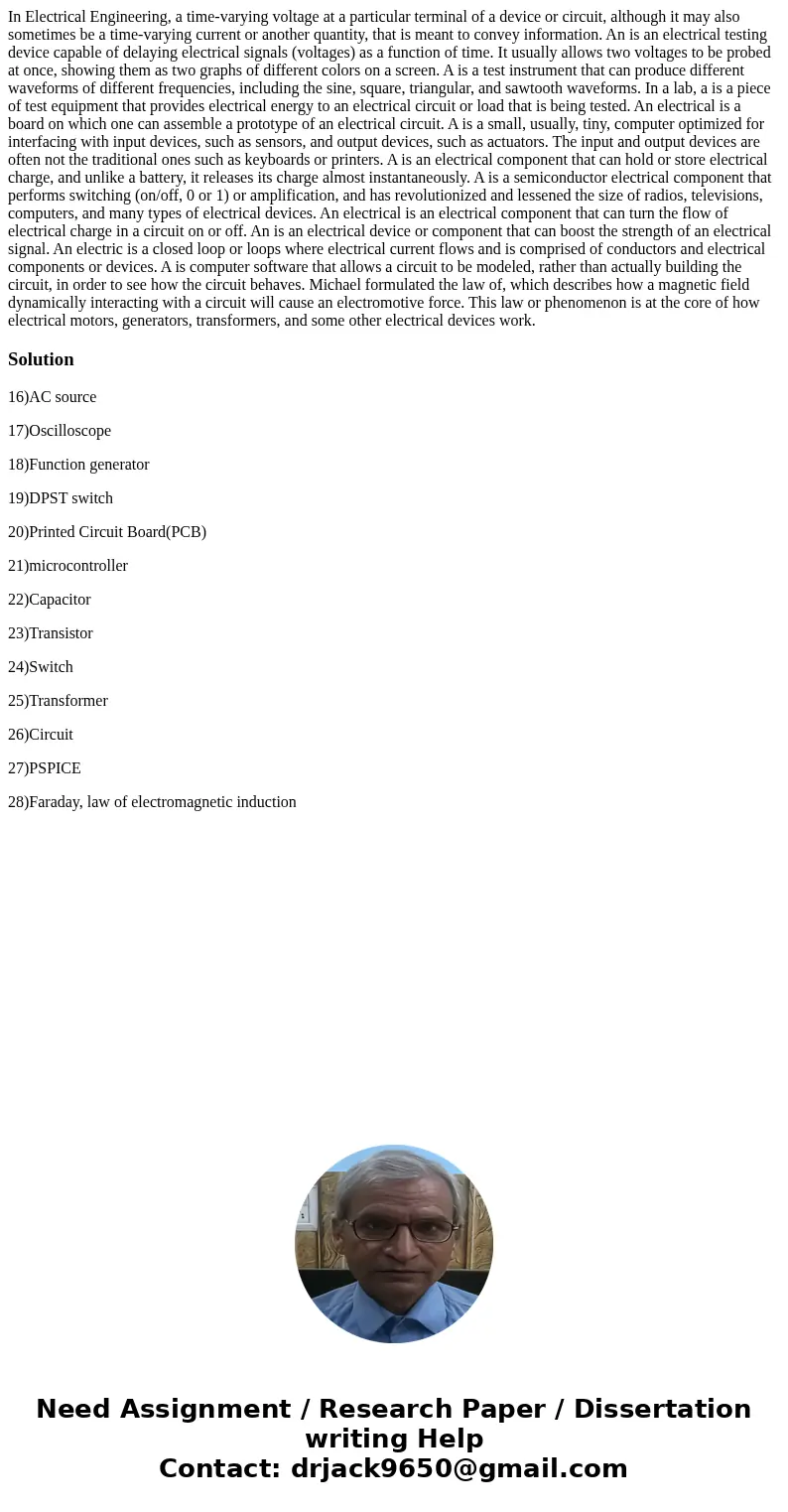In Electrical Engineering a timevarying voltage at a particu
In Electrical Engineering, a time-varying voltage at a particular terminal of a device or circuit, although it may also sometimes be a time-varying current or another quantity, that is meant to convey information. An is an electrical testing device capable of delaying electrical signals (voltages) as a function of time. It usually allows two voltages to be probed at once, showing them as two graphs of different colors on a screen. A is a test instrument that can produce different waveforms of different frequencies, including the sine, square, triangular, and sawtooth waveforms. In a lab, a is a piece of test equipment that provides electrical energy to an electrical circuit or load that is being tested. An electrical is a board on which one can assemble a prototype of an electrical circuit. A is a small, usually, tiny, computer optimized for interfacing with input devices, such as sensors, and output devices, such as actuators. The input and output devices are often not the traditional ones such as keyboards or printers. A is an electrical component that can hold or store electrical charge, and unlike a battery, it releases its charge almost instantaneously. A is a semiconductor electrical component that performs switching (on/off, 0 or 1) or amplification, and has revolutionized and lessened the size of radios, televisions, computers, and many types of electrical devices. An electrical is an electrical component that can turn the flow of electrical charge in a circuit on or off. An is an electrical device or component that can boost the strength of an electrical signal. An electric is a closed loop or loops where electrical current flows and is comprised of conductors and electrical components or devices. A is computer software that allows a circuit to be modeled, rather than actually building the circuit, in order to see how the circuit behaves. Michael formulated the law of, which describes how a magnetic field dynamically interacting with a circuit will cause an electromotive force. This law or phenomenon is at the core of how electrical motors, generators, transformers, and some other electrical devices work.
Solution
16)AC source
17)Oscilloscope
18)Function generator
19)DPST switch
20)Printed Circuit Board(PCB)
21)microcontroller
22)Capacitor
23)Transistor
24)Switch
25)Transformer
26)Circuit
27)PSPICE
28)Faraday, law of electromagnetic induction

 Homework Sourse
Homework Sourse